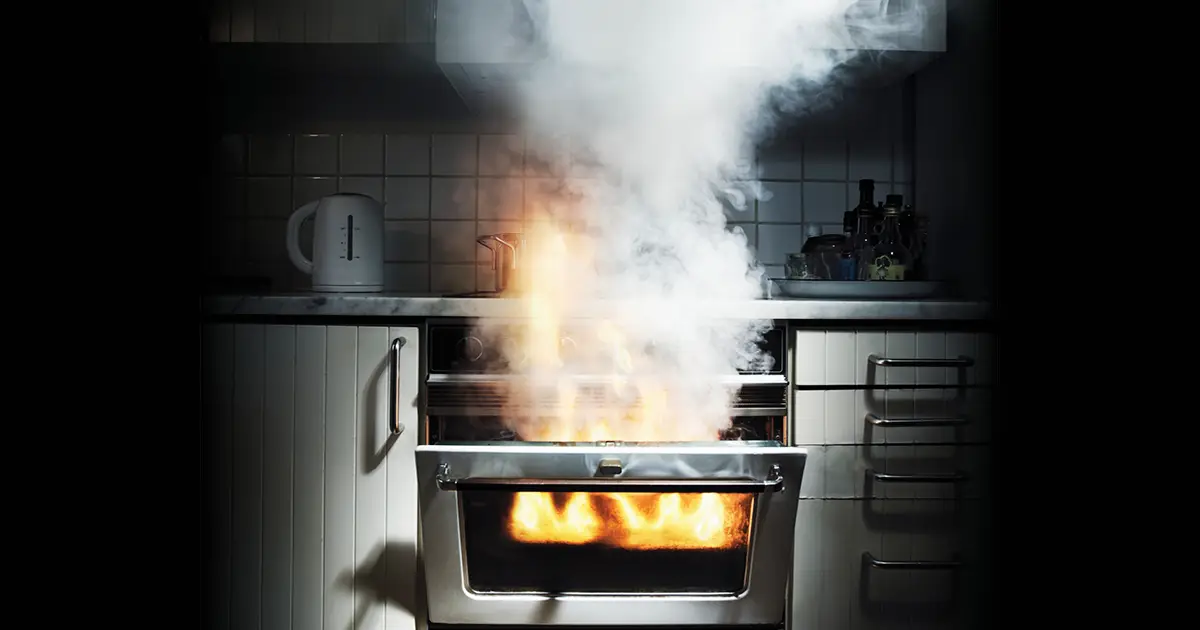Teaching Firefighters to Prepare for Increased Fire Calls During the Holiday Season

With the holiday season upon us, fire departments across the country are preparing for an uptick in house fires. According to the National Fire Protection Association (NFPA), more than three times as many cooking fires occur on Thanksgiving Day than any other day of the year—with causes ranging from unattended equipment to heat sources placed too close to combustibles.
No matter the cause, cooking fires are by far the leading cause of fire deaths, injuries, and property loss during the holiday season. In fact, according to the United States Fire Administration, 165 people died in cooking fires between 2017 and 2019 alone, resulting in more than $444 million in property damage.
So, what can fire educators do to help prevent cooking fires this holiday season? With proper community education, effective messaging, and accessible resources, your department can make a difference. Here’s how.
Training Firefighters to Educate the Community During the Holiday Seasons Using Effective Messaging
Start by training students to include a holiday cooking fire campaign in November and December as part of your department's regular community safety campaigns (if you're not doing this already). As part of this campaign, use plenty of facts and data to emphasize the higher risks associated with home cooking fires throughout the fall and winter months, such as during Thanksgiving and Christmas gatherings.
Have them consider, for example, sharing the following statistics that tend to be eye-opening to residents:
- House fires are more likely to start in the kitchen than in any other room of the house. (American Red Cross)
- Every 2.5 hours, somebody is killed in a house fire. (American Red Cross)
- Unattended cooking causes nearly 90% of all kitchen fires. (American Red Cross)
- Each year, fire departments in the United States respond to an average of 187,500 cooking fires in residential buildings. (US Fire Administration)
This is the time of year that fire departments can also emphasize cooking safety when training firefighters in community risk reduction (CRR), guiding them in deploying seasonally appropriate fire-safety messaging for the holidays and following best practices for working with the media to amplify messaging. Some specific cooking-safety tips firefighters can focus on include:
- Keeping flammable items (such as potholders and food packaging) away from stovetops and other heat sources.
- Exercising extreme caution when handling hot liquids and foods so as to avoid accidental burn injuries.
- Staying in the kitchen while stovetops are in use and setting a timer to check on foods in the oven frequently.
- Keeping kitchens clear of any tripping hazards (including pets).
You can find detailed materials in Public Safety Group's Fire and Life Safety Educator: Principles and Practice—which is specifically written for practitioners, managers, supervisors, and those who are new to the FLSE field. This covers such topics as fire behavior and prevention, code compliance, community risk reduction, and working with the public. Here, you'll explore best practices for effectively educating firefighters, teaching fire and life safety, and marketing prevention/preparedness messages to all age groups.
This textbook also provides fire and life safety curricula, objectives, lesson plans, and presentations that address fall and winter holidays (such as Christmas, Hanukkah, and Kwanzaa) that present their own sets of risks with a month-by-month list of safety campaigns. Likewise, it includes sections on community messaging that address unattended cooking and candles.
Free Resources to Help Build Effective Communications and Prevent Cooking Fires
Finally, introduce students to free fire-safety resources that your department can offer to build your messaging and make it more effective to the public. This can include anything from live presentations, email campaigns, social media campaigns, and other outreach efforts to spread the word about holiday fire/cooking safety. Infographics, pre-written op-eds, pictographs, toolkits, and b-roll video footage showing safety demonstrations with diverse communities can all be effective resources.